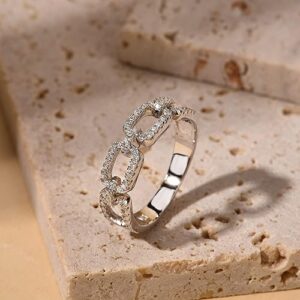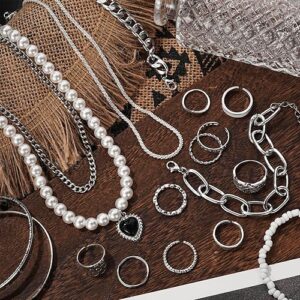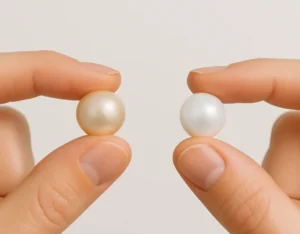When it comes to choosing jewelry, one of the biggest decisions is picking the right metal. White gold, silver, and platinum are three of the most popular choices for rings, necklaces, bracelets, and more.
But what’s the real difference between these precious metals? Which jewelry metal lasts longer? Which one offers better value or fits your budget for engagement rings and wedding bands?
In this comprehensive jewelry metal comparison guide, we’ll break down white gold vs silver vs platinum in simple terms to help you make the perfect choice for your next jewelry purchase.
Table of Contents
What Is White Gold?
White gold is a precious metal made by combining pure yellow gold with white metals like palladium, nickel, or silver. It’s then coated with rhodium to give it a shiny, bright-white finish. Popular in fine jewelry and engagement rings, white gold offers the luxurious look of platinum at a more affordable price.

What Is Sterling Silver?
Silver, often used as sterling silver (92.5% pure), is a naturally white, soft metal known for its brilliant shine and classic beauty. It’s a popular choice in both fashion jewelry and fine jewelry. While silver jewelry is affordable and elegant, it can tarnish and needs proper care and maintenance.
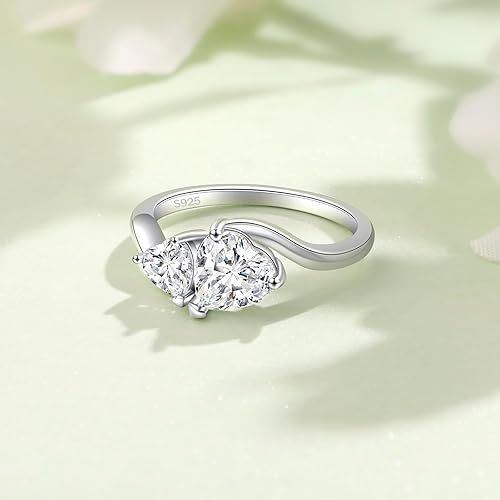
What Is Platinum?
Platinum is a rare, naturally white precious metal known for its strength, purity, and exceptional durability. Heavier and more valuable than gold or silver, platinum jewelry doesn’t tarnish easily and is perfect for engagement rings, wedding bands, and heirloom jewelry pieces. It’s also hypoallergenic, making it ideal for sensitive skin.
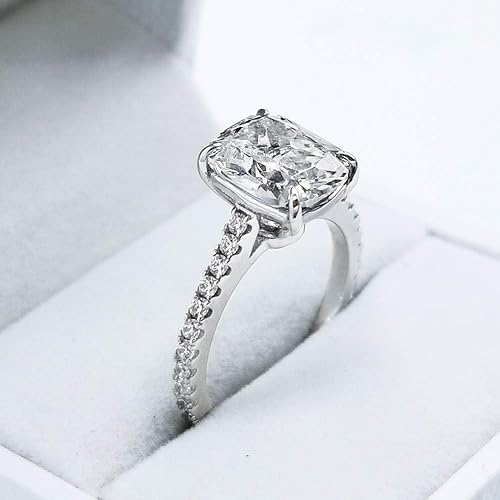
Jewelry Metal Comparison: White Gold vs Silver vs Platinum
Now that we’ve examined each precious metal individually, let’s put them head-to-head. Here’s a clear, simple comparison to help you choose the right one — based on your needs, lifestyle, and budget for your next jewelry purchase.
| Feature | 14K White Gold | Sterling Silver | Platinum |
|---|---|---|---|
| Price Range | $$ Moderate precious metal cost | $ Most affordable jewelry metal | $$$ Most expensive jewelry option |
| Metal Purity | 58.5% gold, 41.5% alloy metals | 92.5% pure silver content | 90–95% pure platinum |
| Natural Color | Rhodium-plated bright white finish | Natural bright white shine | Natural silvery-white appearance |
| Jewelry Durability | Harder alloy, good for daily wear jewelry | Softer metal, prone to scratches and tarnish | Extremely strong and long-lasting metal |
| Maintenance Requirements | Requires rhodium replating over time | Needs regular cleaning and polishing | Minimal maintenance, develops natural patina |
| Allergy Considerations | May contain nickel (unless hypoallergenic alloy) | May cause skin reactions (copper content) | Naturally hypoallergenic precious metal |
| Jewelry Weight | Medium weight precious metal | Lightweight and comfortable | Heavy and dense luxury feel |
| Style Longevity | Versatile for engagement rings | Great for trendy fashion jewelry | Classic, heirloom-worthy jewelry |
Price Comparison: Which One Fits Your Budget?
- Sterling Silver is the most budget-friendly option. It’s perfect if you’re starting your jewelry collection or love changing up styles often without breaking the bank. Ideal for fashion jewelry and trendy pieces.
- White Gold sits in the middle price range for jewelry metals. It offers a luxurious look at a more affordable price than platinum, making it a popular choice for engagement rings and fine jewelry.
- Platinum is the most expensive of the three precious metals.. Its rarity, purity, and strength add to its cost — but for many,
it’s worth the investment for long-term value and prestige in heirloom jewelry.
Metal Purity Comparison: What Are You Really Wearing?
- Silver jewelry is typically 92.5% pure silver, known as sterling silver(925 silver), mixed with other metals like copper for added strength and durability.
- White gold purity varies: 14K white gold contains 58.5% pure gold, while 18K white gold contains 75% pure gold. The remaining percentage consists of alloy metals to boost durability and create the white color.
- Platinum contains 90–95% pure platinum, making it one of the most precious and pure metals used in fine jewelry and engagement rings.
Color and Shine: How They Look
- Silver has a natural, bright white shine with excellent reflective properties, but may dull over time without proper jewelry care and maintenance.
- White Gold looks bright white due to a rhodium plating. This coating gives it a mirror-like finish but may wear off over time, requiring replating maintenance.
- Platinum boasts a natural silvery-white tone that maintains its beauty even with daily wear — no plating required for this precious metal.
Durability: Which One Can Handle Daily Life?
- Silver is the softest metal among the three options. It can easily scratch or bend and tends to tarnish when exposed to air or moisture, making it less suitable for daily wear jewelry.
- White Gold offers better durability than silver for jewelry pieces. It can handle daily wear quite well, especially in 14K form
- white gold form, making it popular for engagement rings and wedding bands.
- Platinum is the strongest and most durable precious metal, perfect for heirloom jewelry or engagement rings that you’ll wear every day for decades without significant wear.
Maintenance Needs: How Much Upkeep Do They Require?
- Silver requires frequent polishing and cleaning to stay shiny and prevent tarnish. Regular jewelry maintenance is essential for preserving its appearance.
- White Gold requires rhodium re-plating every 1–2 years to maintain its white, glossy appearance. This ongoing jewelry maintenance should be factored into long-term costs.
- Platinum is very low-maintenance among precious metals. It does develop a soft patina over time, but many find that appealing. It can also be re-polished easily. Professional polishing can easily restore its original shine.
Hypoallergenic Options: which metal Safe for Sensitive Skin?
- Silver can cause allergic reactions, especially if it contains nickel or is plated with unknown metals. Those with sensitive skin should be cautious with silver jewelry.
- White Gold may also contain nickel, unless alloyed with hypoallergenic metals like palladium. Always check the jewelry composition before buying if you have metal allergies.
- Platinum is naturally hypoallergenic, making it the best choice for sensitive skin or allergy-prone individuals seeking safe jewelry options.
Weight Comparison: How Heavy Do They Feel?
- Silver is lightweight and comfortable for casual or large statement jewelry pieces, making it ideal for fashion jewelry and everyday accessories.
- White Gold has a medium weight among precious metals — it feels more premium than silver without being too heavy for comfortable daily wear.
- Platinum is significantly heavier than other jewelry metals, giving it a luxurious, substantial feel — ideal for special pieces like wedding bands and engagement rings.
Style Longevity: Timeless or Trendy?
- Silver is ideal for trendy, fashion-forward designs that may go in and out of style, perfect for building an affordable jewelry collection.
- White Gold offers a timeless and elegant look, great for both modern and vintage-inspired jewelry designs, especially popular in engagement ring settings.
- Platinum stands the test of time with a classic, heirloom-worthy appeal — often chosen for lifelong keepsakes like engagement or anniversary rings.
Which One Should You Pick?
Choose Sterling Silver Jewelry If:
- You want stylish, affordable jewelry for your collection
- You love to switch jewelry styles often
- You’re okay with regular jewelry maintenance and care
- You prefer lightweight, trend-based jewelry designs
Choose White Gold Jewelry If:
- You’re looking for durable yet elegant precious metal jewelry
- You want an engagement ring that won’t break the bank
- You like bright white jewelry (and are okay with rhodium maintenance)
- You prefer moderate pricing with occasional upkeep requirements
Choose Platinum Jewelry If:
- You’re investing in forever jewelry pieces (wedding, heirloom)
- You have sensitive skin or metal allergies
- You want durable, pure, and luxurious precious metal jewelry
- You value long-term performance over upfront jewelry costs
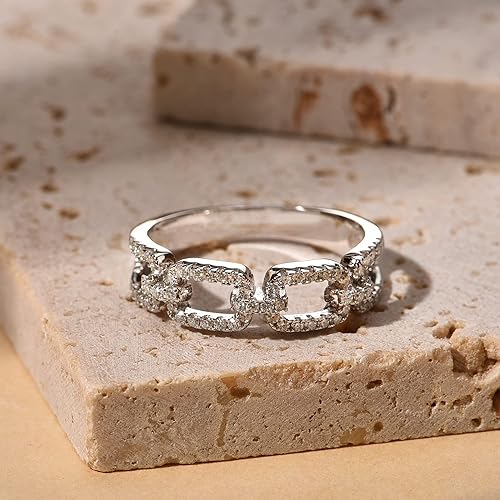
Jewelry Metal Pros and Cons
| Precious Metal | Pros | Cons |
|---|---|---|
| White Gold Jewelry |
• Modern, luxurious appearance (like platinum but more affordable) • Enhances diamond sparkle in engagement rings • Durable enough for everyday jewelry wear • Stylish and versatile for various jewelry designs |
• Requires rhodium re-plating every 1–2 years • May cause jewelry allergies (nickel content) • Natural color is slightly yellow under the plating • Ongoing maintenance costs for jewelry care |
| Sterling Silver Jewelry |
• Very affordable precious metal option • Lightweight and comfortable for daily wear • Easy to match with different outfit styles • Widely available in many jewelry designs |
• Tarnishes when exposed to air and moisture • Soft metal prone to bending and scratches • Can leave green/black marks on skin (copper reaction) • Requires frequent cleaning and maintenance |
| Platinum Jewelry |
• Naturally white color — no plating needed • Extremely strong and long-lasting precious metal • Hypoallergenic (perfect for sensitive skin) • Excellent for securing stones in jewelry settings • Develops unique patina over time |
• Higher cost (material and labor expenses) • Heavier feel on the skin than other metals • Scratches displace metal, adding to patina • Limited availability compared to other metals |
Frequently Asked Question's
The main difference lies in their composition, durability, and price points for jewelry.
- Sterling Silver is a naturally white precious metal, known for its affordability and softer texture, perfect for fashion jewelry.
- White Gold is a man-made alloy of yellow gold mixed with white metals like palladium or nickel, often plated with rhodium for brightness in fine jewelry.
- Platinum is a dense, naturally white precious metal that is extremely durable, hypoallergenic, and more valuable than both silver and white gold for luxury jewelry.
- Silver and white gold can be resized, but white gold may require re-rhodium plating after resizing to maintain its appearance.
- Platinum jewelry can also be resized, but due to its hardness, the process is more complex and often costlier for this precious metal.
All three jewelry metals can be resized, but it’s easiest and most affordable with silver, followed by white gold, while platinum resizing requires a skilled jeweler experienced with precious metals.
Despite their differences, these three metals share several similarities:
- All have a white or silvery appearance, making them popular for modern jewelry.
- They can all be used in engagement rings, necklaces, bracelets, and earrings.
- Each metal can be engraved, polished, and set with gemstones.
- They are all considered precious metals, though with different market values and care requirements.
At first glance, silver, white gold, and platinum may appear similar due to their white or silvery finish, but there are noticeable differences in their color tone, shine, and aging:
- Silver has a bright, shiny white appearance when polished, but it tends to tarnish over time, developing a dull or darkened look if not properly maintained.
- White gold has a slightly warmer hue compared to silver and platinum. It’s usually rhodium-plated to give it a brilliant white shine, but this coating can fade with time, revealing the yellowish undertone beneath unless re-plated.
- Platinum has a naturally white-silver color with a subtle grayish tone. It maintains its color over time without plating and doesn’t tarnish, though it can develop a soft patina that many people find elegant.
In summary, while they may look similar at first, a closer look and time reveal their unique properties in terms of color, luster, and maintenance needs.
When it comes to holding diamonds securely, platinum is considered the best choice among the three. Here’s why:
- Platinum is a dense and durable metal that offers an incredibly strong grip on diamonds. It doesn’t wear away easily, making it ideal for prong settings and ensuring your diamond stays in place for decades.
- White gold also provides good support for diamonds, especially in 14k or 18k forms. However, it’s plated with rhodium, which can wear off over time, requiring replating to maintain both the look and security.
- Silver, while beautiful, is too soft for securely holding diamonds in the long term. It’s more prone to bending or loosening the stone over time, making it less reliable for fine jewelry with diamonds.
In summary: Platinum holds diamonds the best, followed by white gold, while silver is not typically recommended for securing precious stones like diamonds.
Final Thoughts: Choosing Your Perfect Jewelry Metal
Choosing between white gold, silver, and platinum for your jewelry really depends on your personal preferences, lifestyle, and budget considerations.
- On a tight budget? Go for sterling silver. It’s beautiful, affordable, and perfect for trendy jewelry pieces—but keep in mind it needs more care and may tarnish over time.
- Looking for a balance of luxury and durability? White gold is a great middle ground for precious metal jewelry. It offers a premium look without the platinum price tag, though it may need occasional rhodium plating maintenance.
- Want something timeless and tough? Platinum is your best bet for luxury jewelry. It’s naturally white, hypoallergenic, extremely durable—and ideal for heirloom or wedding jewelry that lasts generations.
Ultimately, there’s no one-size-fits-all solution for jewelry metals. Think about how often you’ll wear the piece, your skin’s sensitivity to metals, and whether you’re investing in a long-term classic or just enjoying a fashion moment with your jewelry collection.
This comprehensive jewelry metal guide is based on 15+ years of gemological expertise and jewelry industry experience. Consult with a certified jeweler for personalized advice on choosing the perfect precious metal for your specific jewelry needs.

